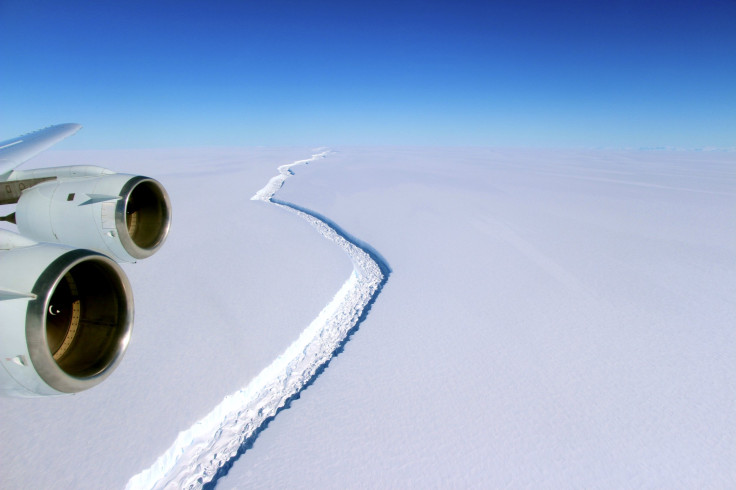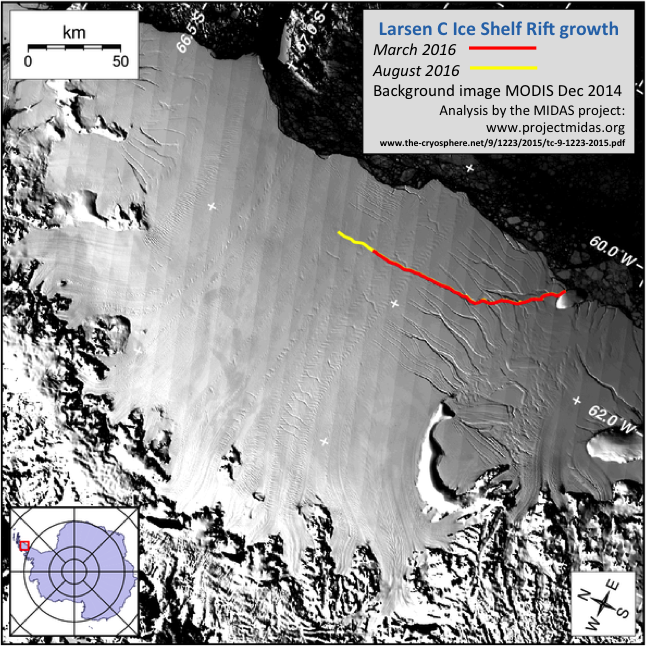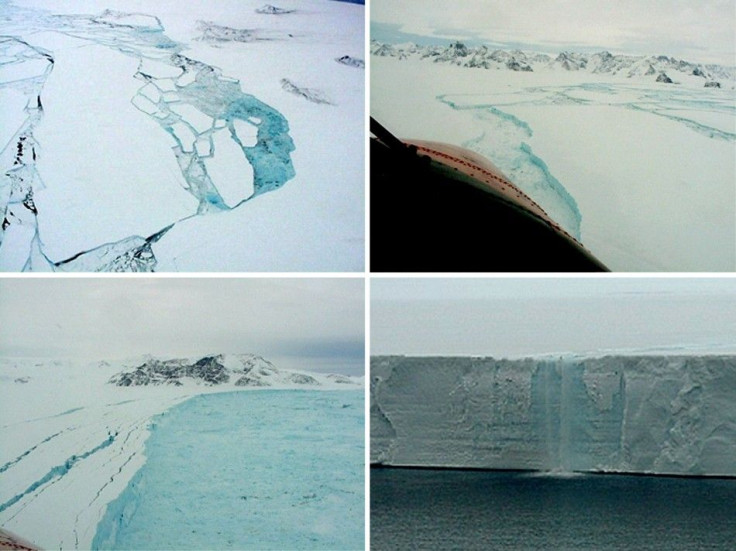Climate Change 2017: Massive Antarctic Iceberg To Break Away Soon From Ice Shelf Larsen C

An iceberg measuring about 1,930 square miles, one of the 10 largest-ever recorded and considered to be nearly twice the size of Rhode Island state or roughly the size of Delaware, is reportedly ready to break away from Antarctica, according to scientists.
Scientists monitoring the condition of the 350-meter( about 1148.29 feet) thick Larsen C ice shelf — the fourth-largest Antarctic ice shelf located in Western Antarctica that holds back the flow of glaciers that feed into it – say that only 20 kilometers (about 12.4 miles) of ice is holding the iceberg from floating away, according to the BBC.

Swansea-based researchers contend that if the iceberg breaks away, it could cause major instability in the Larsen C ice shelf and may even make the shelf vulnerable to similarly break away.

Last year, researchers from the British Antarctic Survey-funded collaboration Project MIDAS noticed that the shelf, whose neighbors Larsen A and B collapsed in 1995 and 2002 respectively, had a huge and rapidly growing rift.
The rift, which grew by over 18 miles in length between 2011 and 2015, grew another 13.7 miles by October since it was last observed in March 2016. However, the size of the rift began stretching even more in December, where it grew by another 11 miles.

"If it doesn't go in the next few months, I'll be amazed…There hasn't been enough cloud-free Landsat images but we've managed to combine a pair of Esa Sentinel-1 radar images to notice this extension, and it's so close to calving that I think it's inevitable." Professor Adrian Luckman, project leader from Swansea University, told BBC News.
Paul Holland of the British Antarctic Survey, the lead author of a study on the melting of the Larsen C ice shelf that was published in 2015, estimated a rise of almost 4 inches as a result of the loss of ice that Larsen C holds back.
Rising sea levels due to global warming is expected to have catastrophic effects, including massive loss of life as it puts thousands of coastal cities at risk. This animation shows where the levels are going, and by how much:
© Copyright IBTimes 2024. All rights reserved.






















